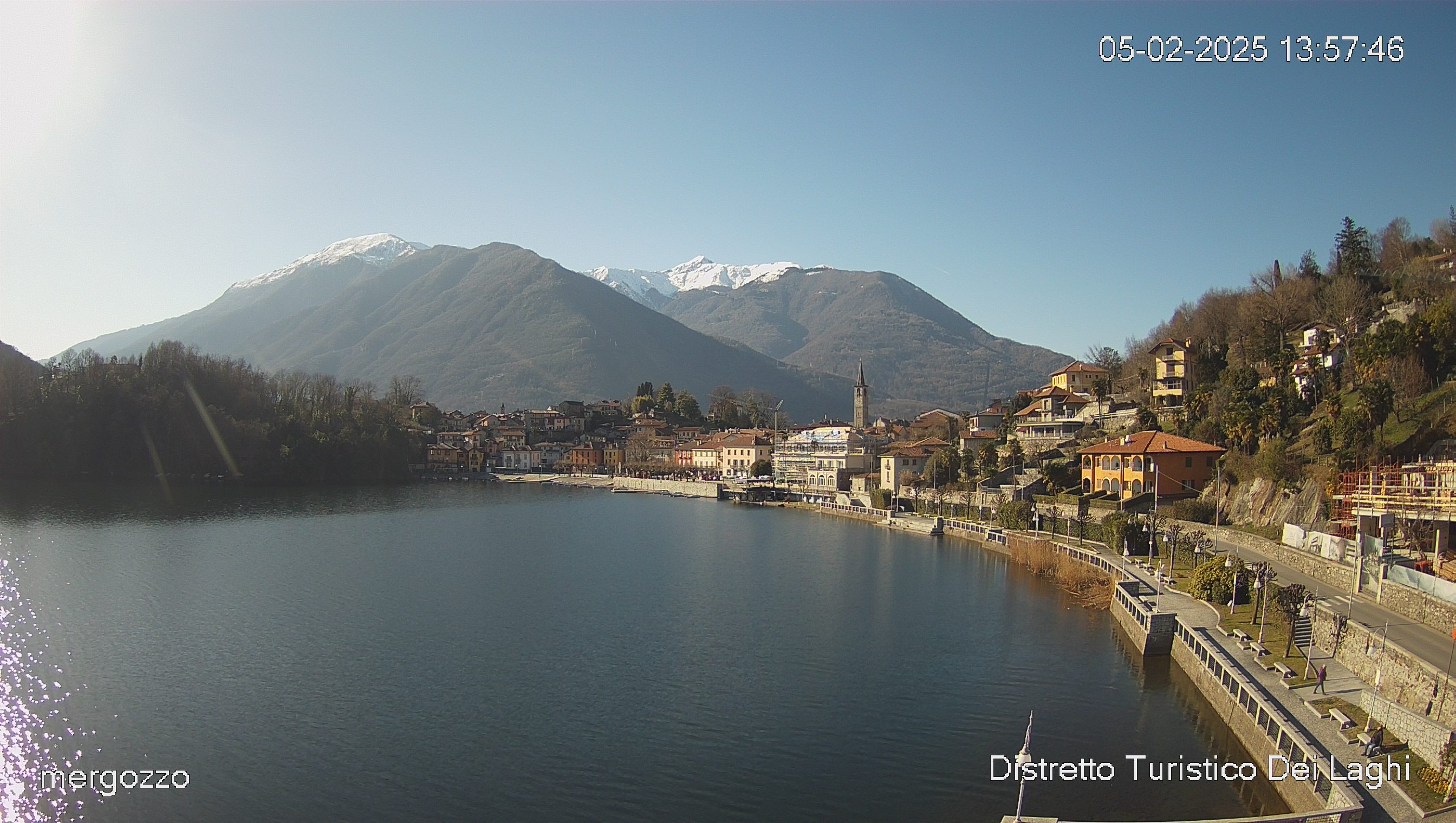PATH SLOW TREK - Mergozzo/Montorfano
A pleasant stroll from the medieval alleys of Mergozzo to its magnificent lake, and then on an ancient mule track until hikers reach the precious small Romanesque church of Montorfano with a unique panorama of Lake Maggiore.
Departure location: Mergozzo lake shore (200 m)
Place of arrival: Montorfano (335 m)
Difference in altitude: About 150 m one way
Distance: 3 km one way
Walking time not counting stops: 1 hour one way
Type of route: mixed (asphalt, cobblestones)
Signs: "Sentiero Azzurro” signs
Water: fountains in Mergozzo and Montorfano
Recommended period: all year round
How to get there: 10 km from Gravellona Toce and 10 km from Verbania. In both cases, go in the direction "Fondotoce", then "Mergozzo". Parking along the SP54. By bus: line 5 Verbania-Domodossola, stop Mergozzo (www.vcotrasporti.it). By train: railway station of Mergozzo along the line to Domodossola.
Information: Distretto Turistico dei Laghi - www.distrettolaghi.it; IAT Office - Corso Roma 20, Mergozzo - tel. +39 (0)323.800935; Municipality of Mergozzo - www.comune.mergozzo.vb.it
the itinerary
Before you start along the promenade that starts from the Lakeside, you should walk through some of the internal alleys in Mergozzo that start at the 17th century church of the Assumption. The large church seems to be wedged in between the narrow alleys, with a solemn staircase that anticipates the portico and flanked by another portico which shelters a Via Crucis from the 19th century. The beautiful church of Santa Marta is not far away, in pure Romanesque style from the 12th century (fountain), at a very short walk from the lakeside promenade area (lungolago).
The Lakeside path has benches and ample spaces for pedestrians, and an elm tree that is estimated to about five centuries old! Stand in front of the water, go to the right until you can enter Via Borzoni (brown signs that say "Sentiero Azzurro") and then immediately go left. Take the cobblestone staircase uphill. At the top of the staircase, go left on Via Maffioli and you will arrive at the Oratory of Saint Elizabeth, built in 1623 (fountain). Behind the oratory, take Via Nostrani on the left for a moment and then go right immediately after Via Montorfano, on a wide uphill trail with deep steps (signs for "Sentiero Azzurro"). Then, go onto asphalt and keep going uphill amid the houses. The road will become a dirt road with many different kinds of signs (road signs, red and white marks, blue bubbles, yellow arrows). When the trail finally becomes a real cobblestone road, you will have no more doubts and proceed in the shade flanked by dry-stone walls. After a hill, you will join on a slightly wider cobblestone path. Go left (follow the signs) and then right away you will go left again, slightly downhill, on a path that leads to a point overlooking Lake Mergozzo, with benches and fountains.
The trail runs along the northern slope of mount Montorfano, just 794 meters in altitude, but this point is a single block of white granite, which explains the presence of several quarries because this stone has been extracted for centuries in this area. White granite of Montorfano was also used for the columns of Saint Paul Outside the Walls in Rome.
The path winds pleasantly with gradual progression, and the lake is almost always visible. With a steeper climb, you will come to an asphalt road.
If you intend to go back with the train instead of walking, you must go right, downhill, to the Verbania-Pallanza railway station.
Take the asphalt road on the left, uphill, passing in front of a small cemetery and arriving at a parking lot. Follow the dirt road to the right that leads to the meadows right before the beautiful Romanesque church of San Giovanni of Montorfano (fountain and tables) that stands isolated in all its architectural purity.
Dating back to the 11th and 12th centuries, the church stands on the remains of a religious building from the 9th century, but recent excavations have brought to light the remains of a much more ancient church, built in the 5th and 6th centuries. You will find it open when it is time for mass.
After visiting the picturesque little church, go uphill in the middle of the houses in the town until you reach a passage delimited by stones that deviates toward the grassy track on the left that climbs up to the panoramic view over Lake Maggiore (Belvedere). You can return by going back the way you came.
to learn more
Lake or gulf?
Lake Mergozzo was already inhabited in ancient times and archaeological finds date back to around 6000 b.C. But at that time, it was a gulf, forming part of Lake Maggiore. Only in the 15th century did it become an independent lake, due to the Toce River slowly bringing in enough that debris to create the barrier that today divides the two lakes.
The Archaeological Museum and the Ecomuseum of Granite
Located in Via Roma 8, in Mergozzo, the museum presents a collection of finds on two floors that offer a brief history of the area from prehistoric times to the Roman era. In one of the rooms, visitors will find descriptions of the history of granite and processing methods (www.ecomuseogranitomontorfano.it). The ancient quarry of Candoglia is a short distance away: the marble taken out of this quarry was used to build the Duomo in Milan and is still used for its maintenance.
tips for young hikers
A very simple walk but, due to the characteristics of the paths, not accessible for strollers.
Slow trekkers: Franco Voglino, Annalisa Porporato and Nora Voglino
Authors of texts: Franco Voglino and Annalisa Porporato
45.960353887492, 8.449022769928
45.960353887492, 8.449022769928
Nearby
Discover places, experiences and activities in nearby locations








